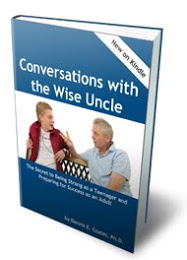There is a common misconception that influencers only serve a limited role in the marketing strategy. Some companies believe that the influencer is only good for the B2C company. Other companies only use influencers for the first stage in the buyer’s journey (awareness) and miss out on big opportunities for the discovery, conversion, and loyalty phases. Business entrepreneur Amir Ben-Yohanan recently explained how businesses are successfully using influencer marketing throughout their marketing strategy.
Amir Ben-Yohanan founded West of Hudson Group, Inc., acting as Chairman, CEO and CFO for Clubhouse Media Group, Inc. and CEO at West of Hudson Group, Inc. (a subsidiary of Clubhouse Media Group, Inc.). He frequently works with influencers who use his properties to create socially-worthy lifestyle pictures.
According to Amir Ben-Yohanan, businesses are using influencers to cover many areas of their marketing strategy.
Appeal to a wide range of brands:
- Promote their physical store (B2C)
- Reach other industry decision-makers (B2B)
Appeal to all parts of the sales funnel:
- Present problems that the brand can solve for the awareness phase
- Provide testimonials about products for the decision phase
- Offer promotions to help speed up the conversion phase
- Remarket to past customers supporting the loyal customer phase
Attracting new target markets: Brands can use influencers to help them break into new markets they want to pursue, Ben-Yohanan explains. Influencers have worked hard to grow a following that trusts them, so brands may have to really pitch why this target audience will appreciate their product or service. But, he says, influencers can help brands be seen in an appealing light to a new potential customer base with the right campaign.
Using different influencers for different jobs: Brands shouldn’t only consider the most prominent influencers as the most powerful marketing tools. Micro-influencers (or nano influencers) can sometimes connect to their audience and more trust within a niche area. Brands have to compare the reach and engagement to the price of the influencer to know if they are getting a good deal. More prominent influencers can boost awareness, while niche influencers may be used to promote the brand to leads further down in the sales funnel.
Breaking into different platforms: Brands often can’t cover all the platforms with a robust approach to content. Influencers can be found on any social media platform, including LinkedIn, TikTok, Pinterest, Snapchat, YouTube, Instagram, and Facebook. This enables brands to reach audiences they weren’t reaching before.
Joining social trends: Amir Ben-Yohanan says that It can be difficult for companies to follow all the trends and insert their brand into those conversations. Influencers often have a finger on the pulse of their platform and will suggest content that falls within these trends for influential marketing.




